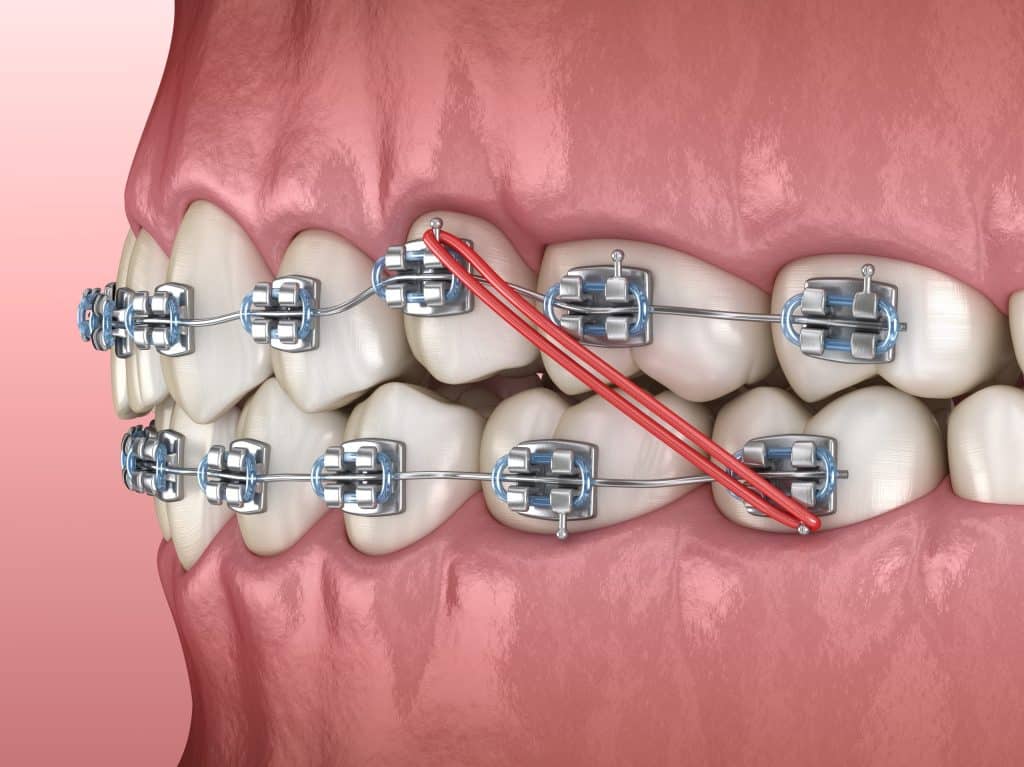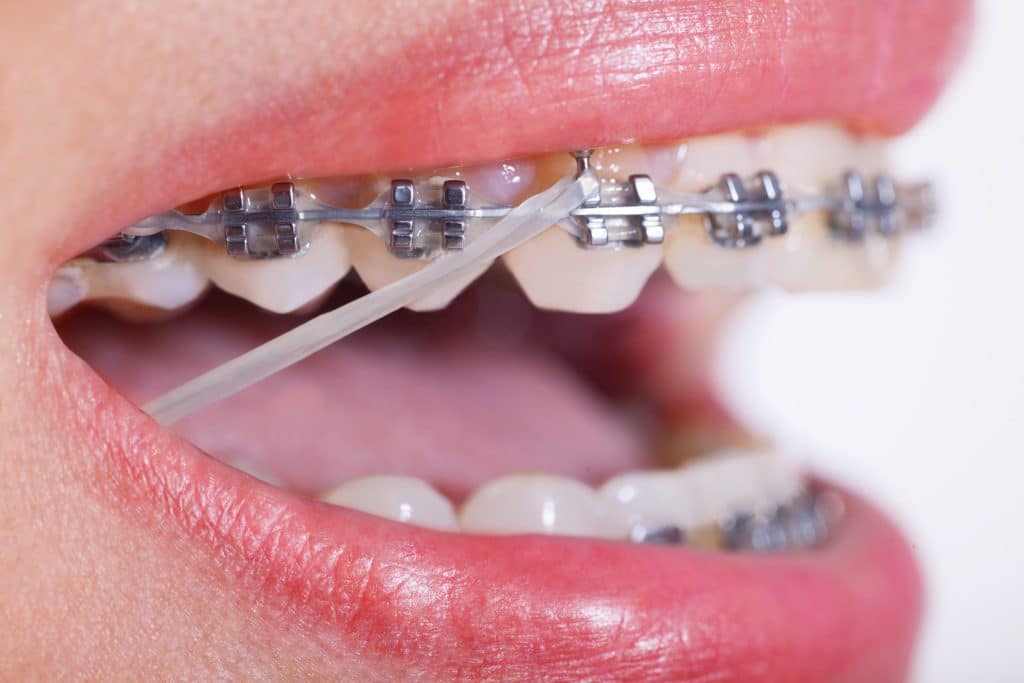Why You Need to Wear the Elastics for Your Braces
When you have braces, you may be asked to wear rubber bands for a portion of your treatment time. Rubber bands are used to help align your bite while your teeth are being straightened. Although you may not love the idea of rubber bands in your mouth, wearing them is important to making sure your orthodontic treatment progresses correctly and you end up with a beautiful, healthy smile.
Why Elastics For Braces Are Important
The clinical name of rubber band used in orthodontics is intra-oral elastic. Elastics help to adjust the bite during orthodontic treatment. If you have a misaligned bite and need elastics for adjustment, it might be due to one of the following:
“Overbite” – When most people say “overbite”, they actually are talking about excessive overjet. Overjet is a measurement of distance between upper front teeth and lower front teeth. Ideal overjet is between 1-2 mm. Overjet is dependent on skeletal relations of maxilla and mandible, position of upper and lower front teeth within the maxilla and mandible and the shape of teeth. When the overjet is excessive, class II elastics are used to correct the bite.
Underbite or Anterior Crossbite – Occurs when upper front teeth fit behind lower front teeth when the bite is closed. The degree of underbite will determine the appliance needed to treat the underbite. If the underbite is minor, class III elastics are used.
“Crossbite” or Posterior Crossbite – Posterior crossbite is when upper posterior(back) teeth are narrow in width in relation to the lower posterior teeth. This crossbite can be unilateral(one side) or bilateral(both sides). The degree of posterior crossbite will determine the appliance(tool utilized in orthodontics) needed to treat the crossbite. If the posterior crossbite is minor, S elastics are used.
Open bite – Open bite is when the upper and lower teeth do not touch when the bite is fully closed. Open bite can be anterior open bite(front teeth not touching) or posterior open bite(back teeth not touching). Open bites can affect the way you eat, causing improper chewing and your speech; those with an open bite are prone to developing a lisp.
Along with correcting the bite misalignment, elastics can help fix any spacing issues between the teeth or straighten crooked teeth. The rubber bands are attached to the brackets with small metal hooks and can be moved into different positions depending on what needs to be corrected. Orthodontist will determine the direction, size and force of elastics for the treatment.
Types of Elastics for Braces

For fun, the patients can ask for the color elastics.
Sizes – In order to fit all types of mouth and treatments, elastics come in different sizes. They are measured by their diameter. Which size you will use will depend on what they are being used for.
Material – Usually the elastics are made from latex. However, if one has a latex allergy, one will need to use non-latex elastics instead. Be sure to let the orthodontist know of any allergies.
Force – The use of elastics is to adjust the bite using the force from the elastics. Elastics are classified by how much force they can apply to the teeth: light, medium, or heavy and this force is measured in ounces.
Usage – Just as there are different sizes, each type of rubber band is broken up into a class based on what they are being used for.
- Class I: Horizontal position. They help to close spaces between teeth.
- Class II: Connects upper canines to lower molars. These are mostly for fixing overbites.
- Class III: Connects upper molars to lower canines. They help to adjust underbites.
Wearing Elastics
When wearing elastics, it is important to follow the orthodontist’s instructions:
- How to put the elastics on and where to attach them to the brackets.
- Where they should be placed on the teeth (one might need to use a mirror the first few times as you get used to wearing them).
- When to change them, such as every few hours or after eating.
- How long one will need to wear them, both in terms of hours per day and the length of the treatment.
One should wear your elastics at all times, except removing them to eat and brush the teeth. Rubber bands should also be changed throughout the day to maintain their force and prevent bacteria from building up. Be sure to wash your hands before touching your elastics and braces. Removing and placing them might be tricky at first, but with enough practice you will be able to do it without a mirror.
Eating With Elastics for Braces
Most of the time you can eat with elastics, but it can depend on where they are in your mouth. If you find them uncomfortable while eating, you usually can remove them, but talk to your orthodontist. They may be able to adjust the elastics to make it more comfortable to eat. They can also confirm if it is okay to remove them before eating.
Be sure to be mindful of what you are eating not only with your braces, but with your elastics, if you need to wear them. Some acidic foods, like oranges or coffee, may cause the elastic to deteriorate faster which can lead to quicker breakage. As with braces, start with small bites of food; if it’s difficult to eat, remove the elastics and replace them once you are finished.
Tips for Wearing Elastics with Braces:
- Don’t double up on braces – place them as your orthodontist has instructed.
- Carry extra elastics with you in case they break. This may happen if they are weak and haven’t been replaced.
- Maintain good oral hygiene. Brush and floss after every meal to keep your braces and elastics free of bacteria.
- Don’t overstretch the elastics when putting them on. Overstretching them will wear them out faster and may cause them to break.
Do Elastics for Braces Hurt?
As with braces, there may be some discomfort in the first few days of wearing elastics while your mouth adjusts. There is a new force being placed on the jaw and teeth with rubber bands, which may take some time to get used to, but shouldn’t cause pain.
To ease any discomfort, you may feel while your mouth gets used to them, ask your doctor if you can take over-the-counter pain medication. If your elastics are causing you too much discomfort, make an appointment with your orthodontist to ensure you are wearing them correctly or there isn’t an allergic reaction occurring.
How Long Do You Need to Wear Elastics?

It is important to wear your elastics as direct for at least 22 hours a day or as directed by your orthodontist. This means you should wear them even while you are sleeping and only remove them while changing them, brushing your teeth, and eating.
Make sure to change out your elastics to brand new ones throughout the day. Just like with hair ties, elastics will lose their elasticity overtime, which means they will not apply the correct amount of force on the teeth, often extending your treatment time. Fresh rubber bands will make sure your teeth and jaw are being adjusted accordingly.
What Happens if the Elastics Come Off or Break?
If your elastic comes off or breaks, which can happen if it’s been overstretched or not replaced properly, you can easily replace it with another one.
Carrying extra elastics wherever you go will make sure that you can replace it as soon as it comes off or breaks. Delaying putting one on will affect the treatment and you may have to wear the elastics longer than the original timeline.
Does Everyone Need Elastics for Braces?
Your orthodontist will inform you if and when you need to wear elastics on your braces. Some people may need them after a few adjustments to their braces earlier in the treatment, while others will wear them towards the end to help with corrections.
Even those with Invisalign may need to wear elastics during their treatment. Like metal braces, there are special hooks or onto attachments, sometimes called buttons, that will hold the elastics in place.
Not all people who wear braces will need elastics, but your orthodontist will let you know if you do and when.
Do You Have Questions About Elastics for Braces?
No one wants to wear elastics or rubber bands with their braces and they may seem like a hassle at first, but they are an important aspect of getting braces. They help to align your jaw, straighten teeth, and close the spaces between teeth.
Getting used to wearing them may take some time, as well as learning how to put the rubber bands on properly, but it’s well worth it for that great smile. If you have any questions about wearing elastics for your braces or are interested in other orthodontic procedures, talk to us at OoLi Orthodontics and we can start your orthodontic journey.


